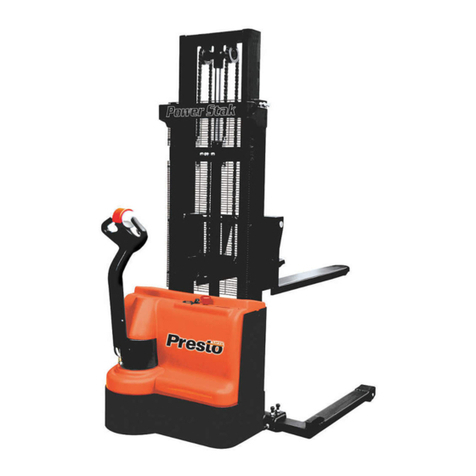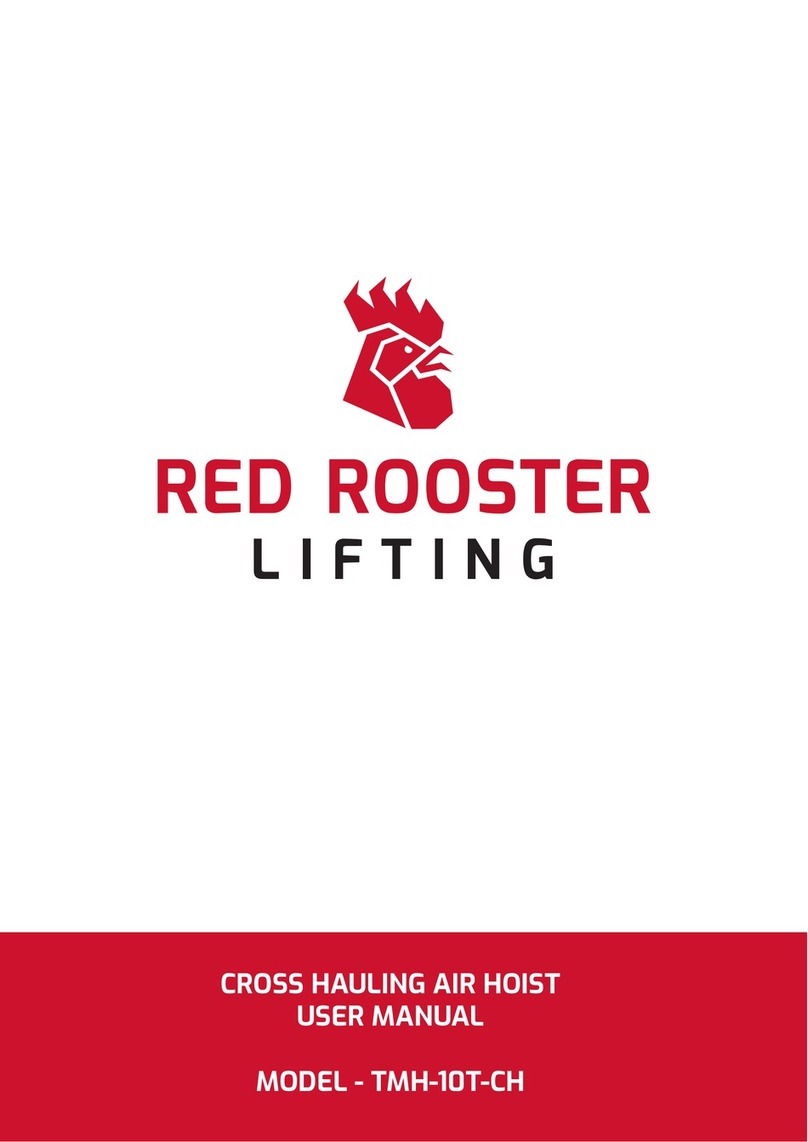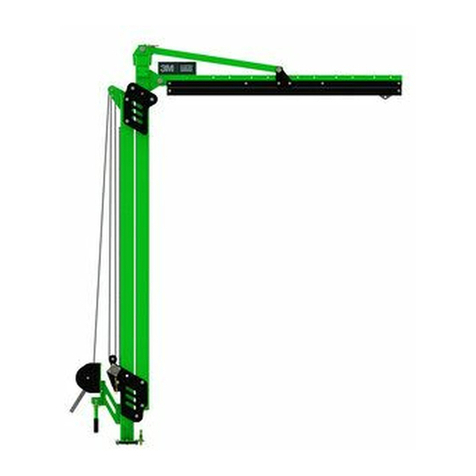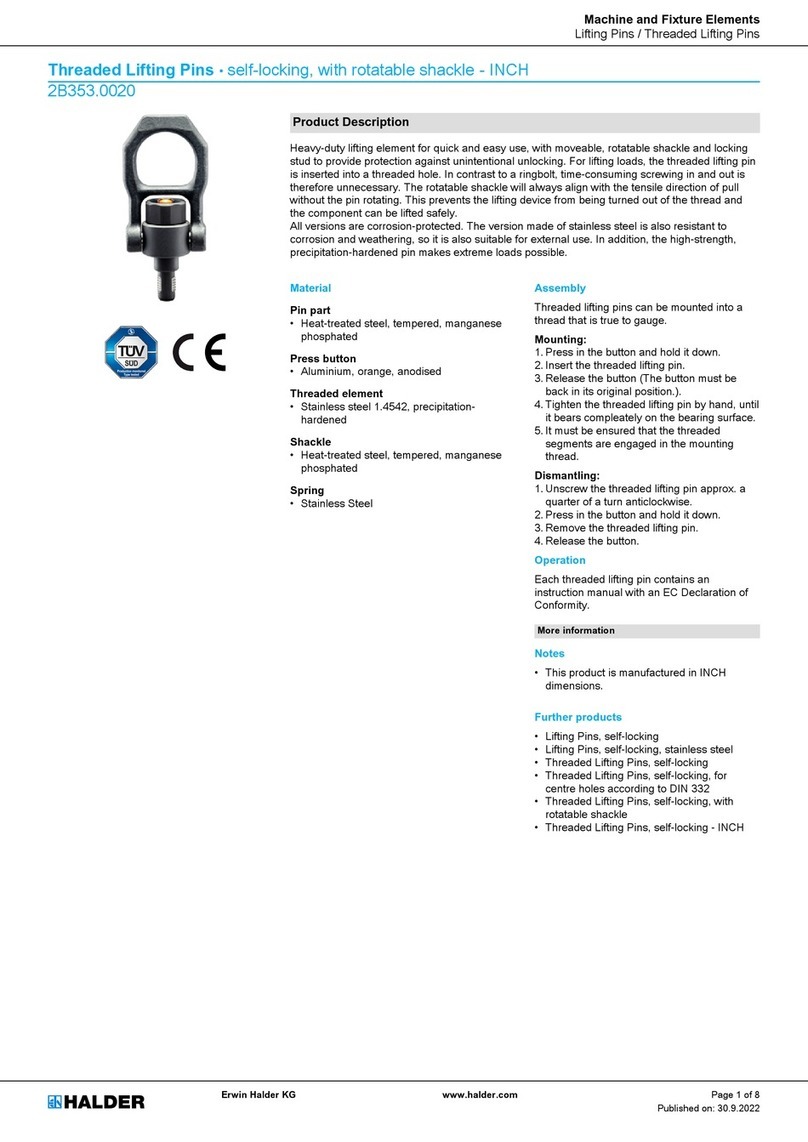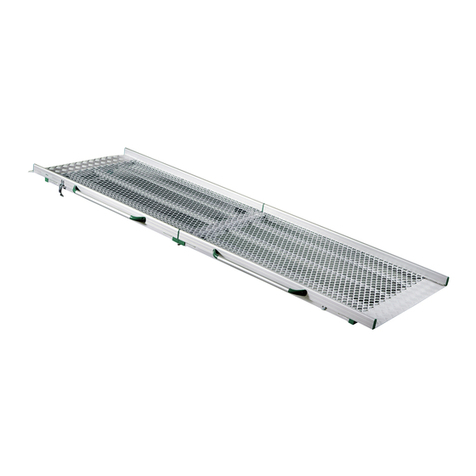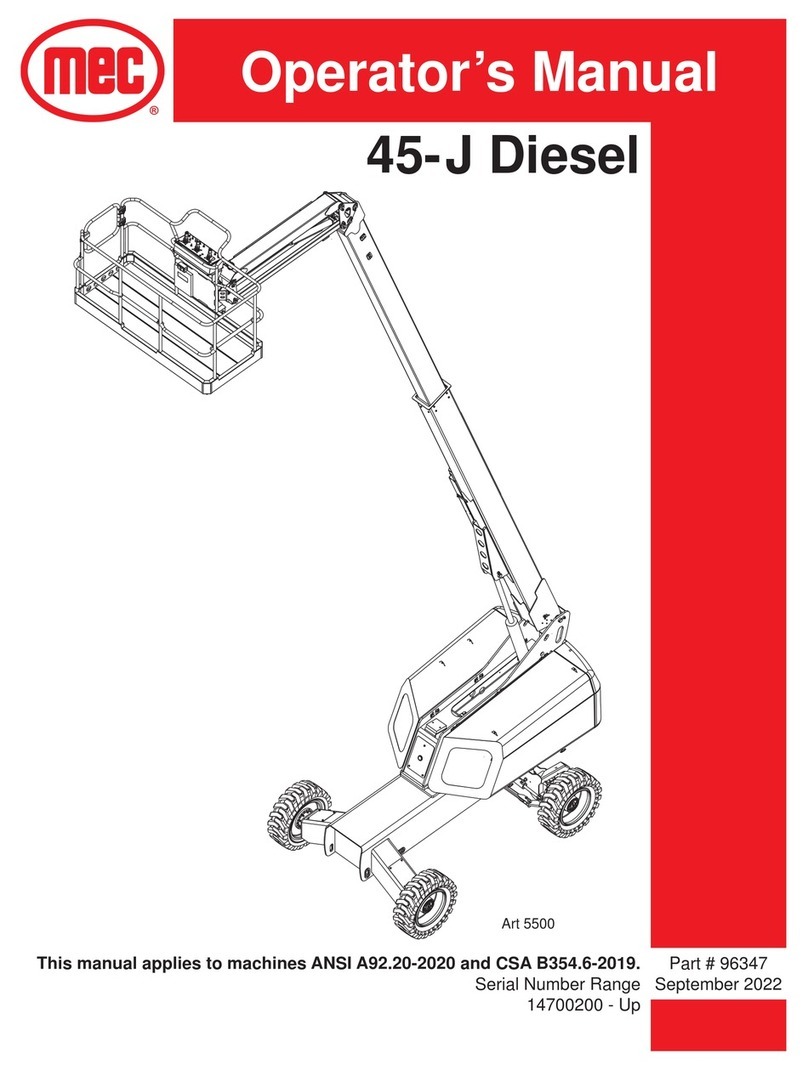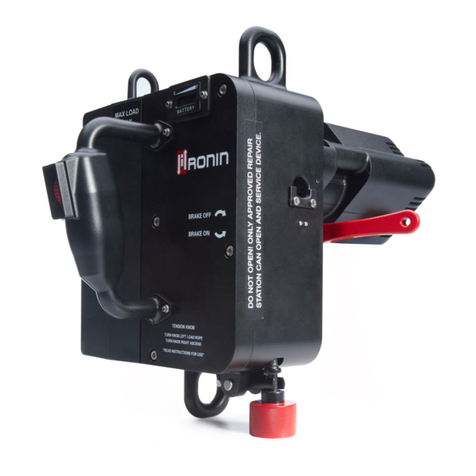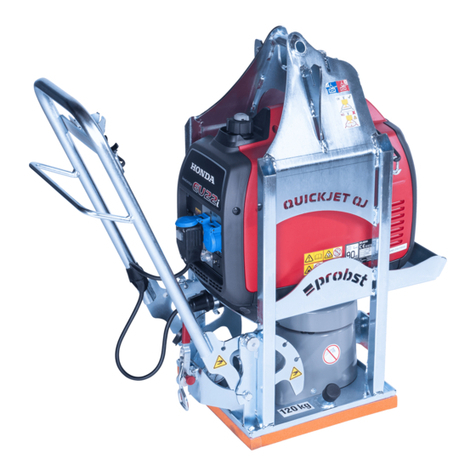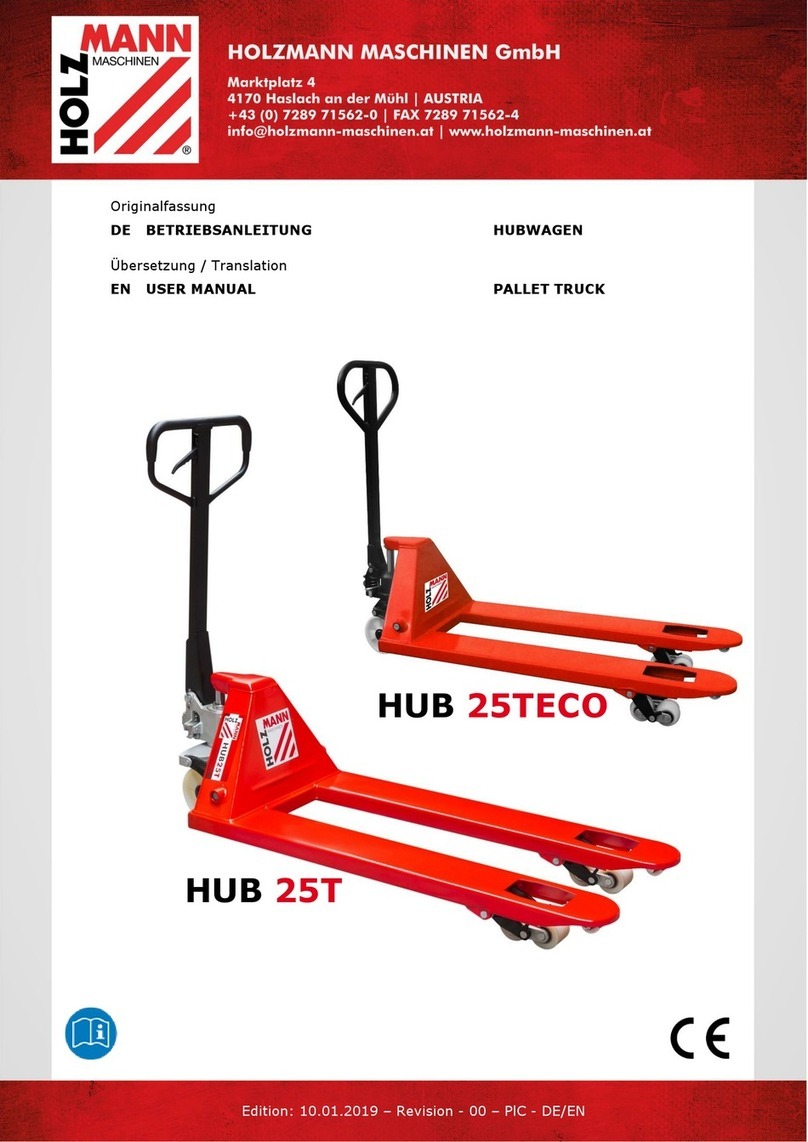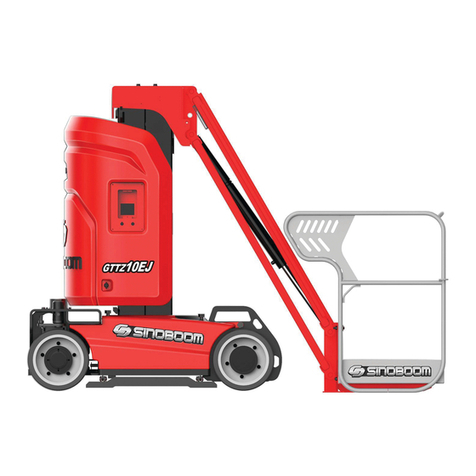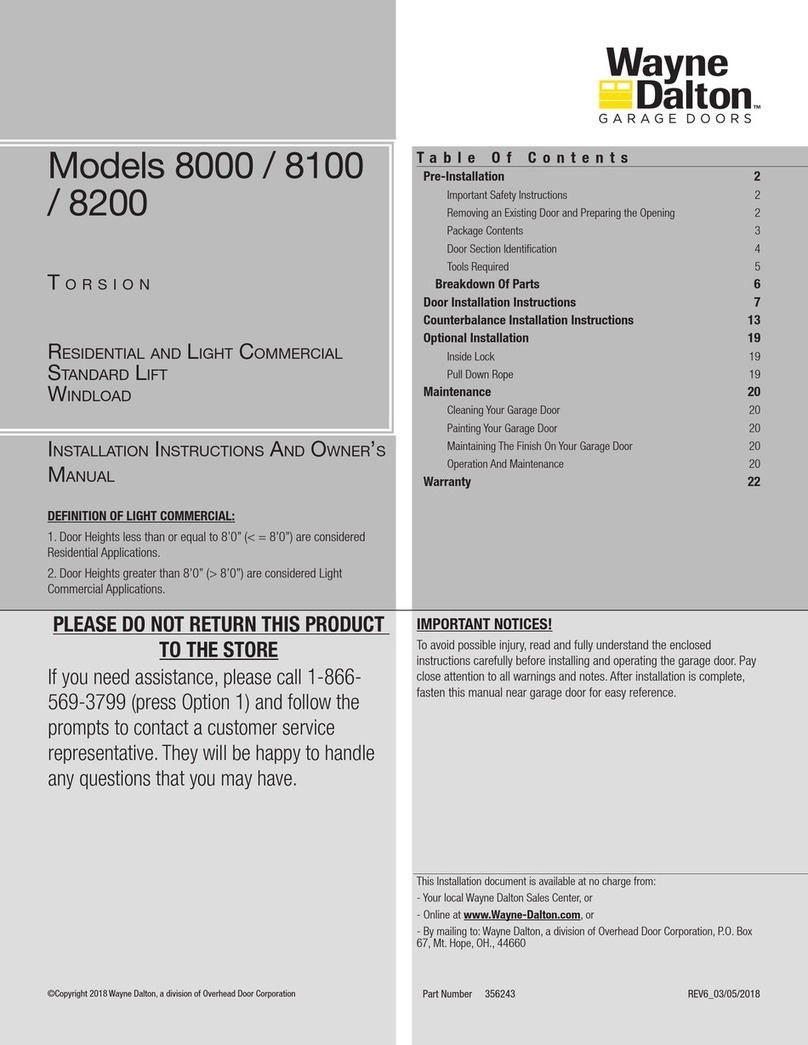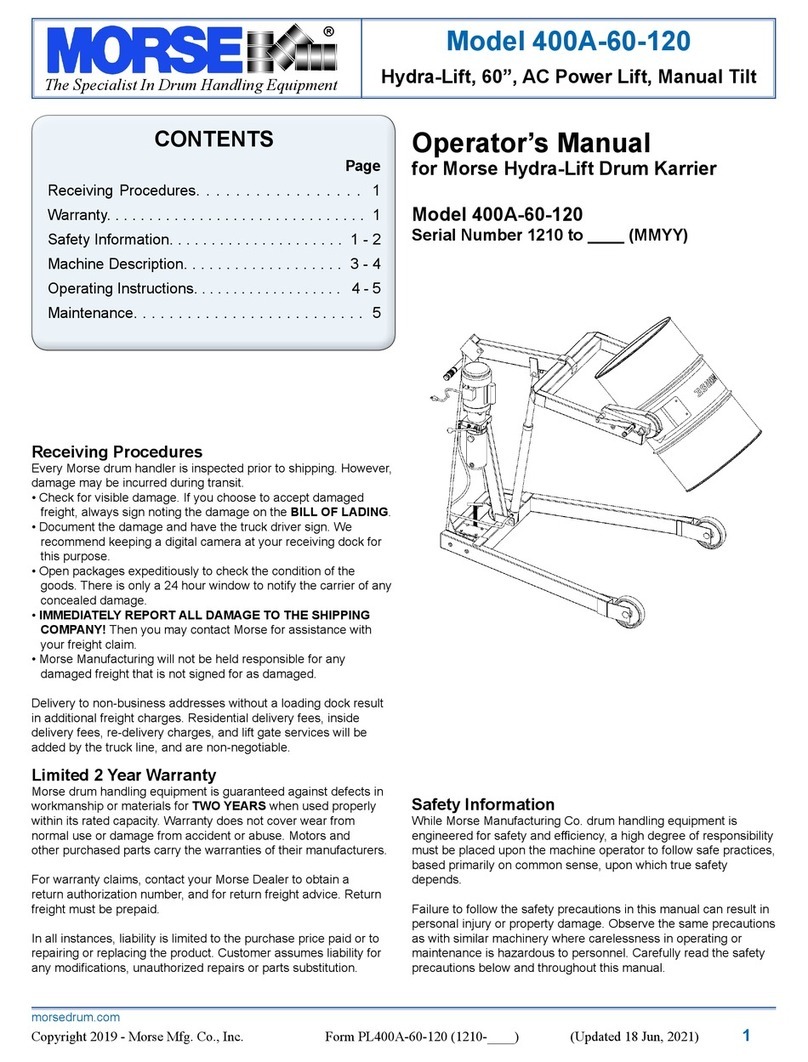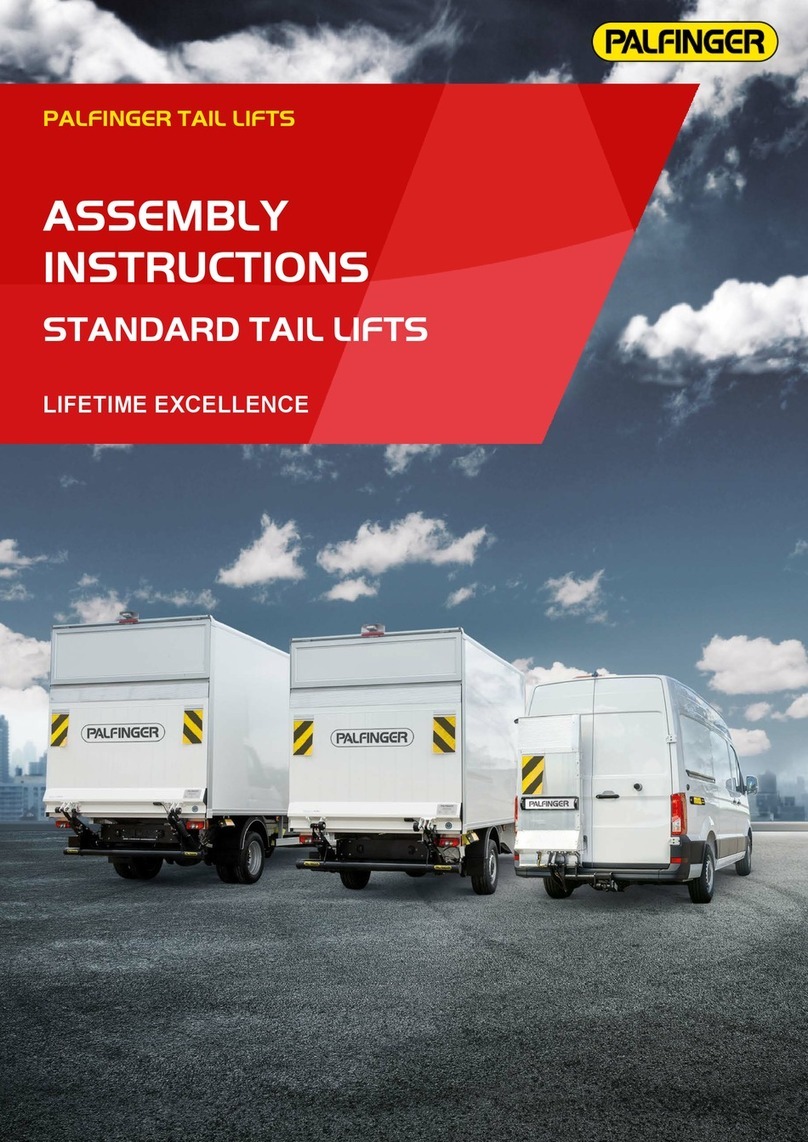Presto Lifts ECOA Series User manual

Presto Lifts P4 ManualJune 6 2019
P4 Floor Height Load Leveler
Owner’s Manual
Presto Lifts Inc.
50 Commerce Way, Norton, MA 02766
Phone: 800.343.9322
Fax: 888.788.6496
www.PrestoLifts.com
Email: [email protected]
Model:
Serial Number: __________________________
Date placed in
service:
__________________________

Presto Lifts P4 Manual2
Contents
1 Introduction............................................................................................................. 4
1.1 Responsibilities of Owner and Users.................................................................................. 4
1.2 Responsibilities of Operators.............................................................................................. 5
2 Safety....................................................................................................................... 7
2.1 Safety Alert Symbols ............................................................................................................ 7
2.2 Signal Words ......................................................................................................................... 7
2.3 Safety Devices....................................................................................................................... 7
3 Labeling................................................................................................................... 7
3.1 Label Placement Diagram .................................................................................................... 8
4 Installation............................................................................................................... 9
5 Operation............................................................................................................... 10
5.1 Relocating the Machine.......................................................................................................11
5.2 Loading ................................................................................................................................ 12
5.3 Raising and Lowering the platform................................................................................... 12
6 Maintenance & Repair.......................................................................................... 12
6.1 Periodic Maintenance ......................................................................................................... 13
6.1.1 Monthly........................................................................................................................ 13
6.1.2 Annually....................................................................................................................... 13
6.2 Relieving Hydraulic System Pressure............................................................................... 14
6.3 Cleaning the Down Valve.................................................................................................... 15
6.4 Replacing Hydraulic Fluid.................................................................................................. 15
6.5 Ordering Replacement Parts.............................................................................................. 16
7 Troubleshooting ................................................................................................... 16
8 Electrical................................................................................................................ 18
8.1 Wiring Schematic ................................................................................................................ 18
9 Hydraulics ............................................................................................................. 18
9.1 Hydraulic Power Unit.......................................................................................................... 19
9.2 Hydraulic Schematic........................................................................................................... 19
10 Components........................................................................................................ 20
11 Warranty & Contact Information ....................................................................... 21

Presto Lifts P4 Manual3
This label (part # 10095524)
is required by California law.
For more information visit
www.65Warnings.ca.gov.
This label (part # 10095524)
is required by California law.
For more information visit
www.P65Warnings.ca.gov.

Presto Lifts P4 Manual4
1. Introduction
1.1 Responsibilities of Owner and Users
Basic Principles - Owners/users shall apply sound principles of safety, training, inspection,
maintenance, and expected operating environment. It shall be the responsibility of the owner/user
to advise the manufacturer where deection may be critical to the application.
Manuals - Owners/users shall keep and maintain a copy of the operating and maintenance
manual(s) and ensure its availability to operating and maintenance personnel.
Inspection and Maintenance - It shall be the responsibility of the users to inspect and
maintain the machine as required to ensure proper operation. The frequency of inspection and
maintenance shall be based upon the manufacturer’s recommendations and be compatible with
operating conditions and the severity of the operating environment. Machinery that is not in proper
operating condition shall be immediately removed from service until repaired. Maintenance and
repairs shall be made by a qualied person and the repairs shall be in conformance with the
manufacturer’s recommendations.
Maintenance Safety Precautions - Before adjustments and repairs are started on the machine,
the following precautions shall be taken as applicable:
1. Remove the load from the load enclosure.
2. Lower platform to the full down position.
3. Relieve system pressure from all circuits before loosening or removing any components.
4. All controls in the “off’ position and all operating features secured from inadvertent motion
by brakes, blocks, or other means.
5. Disconnect power and follow established owner/user lockout/tag out policies.
6. Follow precautions and directions as specied by the manufacturer.
Replacement Parts - When parts or components are replaced, they shall be replaced with parts
or components approved by the original manufacturer.
Maintenance Training - The user shall ensure only qualied personnel inspect and maintain the
machine in accordance with the manufacturers recommendations.
Operator Training - An owner/user, who directs or authorizes an individual to operate the
machine shall ensure that the individual has been:
1. Trained in accordance with the manufacturer’s operating manual.
2. Made aware of the responsibilities of operators as outlined in section 1.4 of this manual.
3. Retrained, if necessary, based on the owners/user’s observation and evaluation of the
operator.
Modications and additions shall not be performed without the manufacturer’s prior written
approval. Where such authorization is granted, capacity, operation, and maintenance instruction
plates, tags, or decals shall be changed accordingly.

Presto Lifts P4 Manual5
1.2 Responsibilities of Operators
Basic Principles - Operators shall apply sound principles of safety and good judgment in
the application and operation of the machine with consideration given to its intended use
and expected operating environment. Since the operator is in direct control of the machine,
conformance with good safety practices is the responsibility of the operator. The operator shall
make decisions on the use and operation with due consideration for the fact that his or her own
safety as well as the safety of other personnel on or near the machine is dependent on those
decisions.
General Training - Only personnel who have received general instructions regarding the
inspection, application and operation of machine, including recognition and avoidance of hazards
associated with their operation, shall operate the machine. Such topics covered shall include, but
not necessarily be limited to, the following issues and requirements:
1. A pre-start inspection
2. Responsibilities associated with problems or malfunctions affecting the operation of the
machine.
3. Factors affecting stability
4. The purpose of placards and decals
5. Workplace inspection
6. Safety rules and regulations
7. Authorization to operate
8. Operator warnings and instructions
9. Actual operation of the machine. Under the direction of a qualied person, the trainee shall
operate the machine for a sufcient period of time to demonstrate prociency in actual
operation of the machine.
Pre-start Inspection - Before use each day or at the beginning of each shift, the machine shall be
given a visual inspection and functional test including but not limited to the following:
1. Operating and emergency controls
2. Safety devices
3. Hydraulic system leaks
4. Electrical cables and wiring harness
5. Loose or missing parts
6. Nameplates, precautionary and instructional markings and/or labeling
7. Guarding system
8. Items specied by the manufacturer
Problem or Malfunctions - Any problems or malfunctions that affect the safety of operations shall
be repaired prior to the use of the machine.
Before Operations - The operator shall:
1. Read and understand the manufacturer’s operating instruction(s) and user’s safety rules or
have them explained
2. Understand all labels, warnings, and instructions displayed on the machine or have them
explained.

Presto Lifts P4 Manual6
Workplace Inspections - Before the machine is used and during use, the operator shall check
the area in which the machine is to be used for possible hazards such as, but not limited to:
1. Bumps, oor obstructions and uneven surfaces
2. Overhead obstructions and electrical hazards
3. Presence of unauthorized persons
4. Other possible unsafe conditions as noted in the operating manual.
Operator Warnings and Instructions - The operator shall ensure the operation of the machine
is in compliance with the following:
Guarding system - Guarding shall be installed and positioned, and access gates or openings
shall be secured per the manufacturer’s instructions.
Distribution of load - The load and its distribution on the platform shall be in accordance with the
manufacturer’s rated capacity for that specic conguration.
Maintaining overhead clearance - The operator shall ensure that adequate clearance is
maintained from overhead obstructions and energized electrical conductors and parts.
Point of Operation - The operator shall not place any part of their body under the platform.
Precaution for moving equipment - When other moving equipment or vehicles are present,
special precautions shall be taken to comply with the safety standards established for the
workplace.
Reporting problems or malfunctions - The operator shall immediately report to a supervisor any
problem(s) or malfunction(s) that become evident during operation. The operator shall ensure all
problems and malfunctions that affect the safety of operations are repaired prior to continued use.
Capacity limitation - Rated capacity shall not be exceeded when loads are transferred to the
load enclosure.
Work area - The operator shall ensure the area surrounding the machine is clear of personnel and
equipment before lowering the load enclosure.
Securing the machine - The operator shall comply with the means and procedures provided to
protect against use by an unauthorized person(s).
Altering safety devices - Safety devices shall not be altered or disabled.
Modications or alterations of the machine or the fabrication and attaching of frameworks or the
mounting of attachments to the machine or the guarding system shall only be accomplished with
prior written permission of the manufacturer.
Assistance to the operator - If an operator encounters any suspected malfunction or any hazard
or potentially unsafe condition relating to capacity, intended use or safe operation the operator
shall cease operation of the machine and request further instruction from the owner/user.
Problems or malfunctions - Any problem(s) or malfunction(s) that affect the safety of operations
shall be repaired prior to the use of the machine.

Presto Lifts P4 Manual7
2. Safety
All personnel installing, operating, and maintaining this machine shall read and understand this
manual. For questions or concerns contact the manufacturer.
This machine shall be installed, operated, and maintained by trained and/or qualied personnel
only.
2.1 Safety Alert Symbols
A symbol that indicates a hazard. It is composed of an equilateral triangle surrounding an
exclamation mark. The safety alert symbol is only used on hazard alerting signs. It is not used on
safety notice and safety instructions signs.
A – For use with DANGER signal word; (safety white triangle, safety red exclamation mark, safety
red background)
B – For use with WARNING signal word; (safety black triangle, safety orange exclamation mark)
C – For use with CAUTION signal word; (safety black triangle, safety yellow exclamation mark)
D – For use with DANGER, WARNING, or CAUTION signal words; (D is a safety yellow triangle
with a safety black border and safety black exclamation mark;
2.2 Signal Words
DANGER Indicates a hazardous situation that, if not avoided, will result
in death or serious injury.
WARNING Indicates a hazardous situation that, if not avoided, could
result in death or serious injury.
CAUTION Indicates a hazardous situation that, if not avoided, could
result in minor or moderate injury.
NOTICE Indicates information considered important, but not hazard-
related (e.g., messages relating to property damage).
2.3 Safety Devices
This machine is equipped with devices and features to protect the operator and nearby personnel
from severe injury or death. These features and devices shall be installed and functioning correctly
during operation.
Photo Eye Toe Protection: This machine is equipped with a photo eye across the front opening.
This photo eye detects when there is an obstruction in the path of the platform and prevents the
platform from raising or lowering until the obstruction is cleared.
3. Labeling
This machine has labeling to indicate potential hazards this machine may pose when operating
and/or maintaining the machine. All labels must be legible. If any label is missing, damaged, or
otherwise illegible contact the manufacturer for replacement labels.
ABCD

Presto Lifts P4 Manual8
3.1 Label Placement Diagram
LD DCL 2.00X3.00 PRESTO SERIAL ID BLANK
BK-LD 1.62X7.00 PRESTO ALPHA
10079930
C180N
LD DCL 2.00X3.00 PRESTO SERIAL ID BLANK
BK-LD 1.62X7.00 PRESTO ALPHA
10079930
C180N
LD DCL 2.00X3.00 PRESTO SERIAL ID BLANK
BK-LD 1.62X7.00 PRESTO ALPHA
10079930
C180N

Presto Lifts P4 Manual9
4. Installation
Before Installation read and understand this manual. Only trained and/ or qualied personnel
shall install this machine. Remove all packaging and inspect the machine for damage and/ or
missing components. Contact the manufacturer if damage is found or components are missing.
The owner/ installer is responsible for ensuring all codes and ordinances are met and any
necessary permits are obtained prior to installation.
Anchoring this machine is optional. Four anchor holes are provided if anchoring the machine is
preferred.
Electric motors can create sparking, do not install in an area where
ammable materials are present.
This machine must be installed in an area protected from rain and
moisture.
This machine must be installed and operated on a solid, level surface
capable of supporting the machine and it’s maximum rated capacity.
Do not sit, stand, or ride on the platform.
Fork trucks, pallet jacks, or other lifting devices used for moving this
machine must be capable of lifting 2000 lb. minimum.
Machines equipped with 1HP 115/1/60 power units must be powered
using a dedicated circuit with a 20 amp breaker.
Do not power this machine with an extension cord or the motor and
other electrical components may be damaged.
Do not enter beneath the platform.
This machine is shipped with two bolts threaded into inside of each side panel. These bolts allow
for the lifting of the machine.
To remove the machine from the shipping pallet:
1. Unfasten the machine from the pallet.
2. Plug the machine in and raise the platform until the vertical sides just come in contact with
the bolts.
Do not continue to power the machine after the platform contacts the
bolts or the machine may be damaged.
3. Unplug the machine and store the power cord so it does not get damaged during transport.
4. Carefully insert the forks of a fork truck under the platform and raise the forks until they
come in contact with the bottom of the
platform.
Insert forks completely
and ensure the
machine’s center of
mass is supported when
transporting.
5. Continue to carefully raise the forks until
the machine raises off of the pallet.
APPROXIMATE
CENTER OF
MASS
INSERT FORKS UNDER PLATFORM.
ENSURE FORKS ARE INSERTED
COMPLETELY AND MACHINE’S
CENTER OF MASS IS SUPPORTED

Presto Lifts P4 Manual10
6. Carefully move the machine to the desired location.
This machine may be operated without being anchored. If anchoring the machine is
desired:
1. With the machine in the desired position mark the anchor holes located at each corner of
the machine.
2. Move the machine and drill holes for the anchors.
3. Move the machine back into position and anchor the machine using appropriate anchors.
Once the machine has been positioned plug the machine in, lower the platform to the fully lowered
position and remove the two bolts. These bolts can be stowed in the holes in the center vertical
post on the outside of the side panels.
The two bolts must be removed before attempting operate the machine
or the machine may be damaged.
5. Operation
Crush, pinch, and shear points exist; keep hands, feet, and loose
clothing away from machine during operation.
Do not enter beneath the platform.
Verify the area around the machine is clear of debris and/ or personnel
before operating.
The two bolts used to relocate the machine must be removed before
operating the machine or the machine may be damaged.
Only trained and/ or qualied personnel shall operate this machine.
Personnel operating this machine must read and understand this
manual.
Do not sit, stand, or ride on platform.
Before each use, inspect the machine for excessive wear or damage. Verify all precautionary
labeling is legible. Verify the photo eye across the load opening is functioning correctly by placing
an object in the path of the light and attempting to raise and lower the platform. The platform must
not lower or raise if the photo eye is obstructed.
BOLTS USED TO LIFT THE
MACHINE THREADED INTO
VERTICAL POST ON INSIDE OF
SIDE PANELS (BOTH SIDES)
ANCHORING POINTS
EACH CORNER.
BOLTS CAN BE STOWED IN THE
HOLES ON THE OUTSIDE OF
THE VERTCAL CENTER POST

Presto Lifts P4 Manual11
5.1 Relocating the Machine
Always remove the load before attempting to relocate the machine.
This machine may be relocated as necessary. To move the machine:
1. Lower the platform to the fully lowered position.
2. Remove the lifting bolts from their stowed position and thread them into the holes on the
inside of the vertical posts of the side panels.
3. Plug the machine in and raise the platform until the vertical sides of the platform come in
contact with the bolts.
Do not continue to power the machine after the platform contacts the
bolts or the machine may be damaged.
4. Unplug the machine and store the power cord so it does not get damaged during transport.
5. Carefully insert the forks of a fork truck or pallet jack under the platform and raise the forks
until they come in contact with the bottom of the platform.
Insert forks
completely and
ensure the machine’s
center of mass is
supported when
transporting.
6. Continue to carefully raise the forks
until the machine raises off of the
oor.
7. Carefully move the machine to the
desired location.
Once the machine has been positioned,
plug the machine in, lower the platform to the fully lowered position and remove the two bolts and
stow them in the holes in the center vertical post on the outside of the side panels.
The two bolts must be removed before attempting operate the machine
or the machine may be damaged.
BOLTS USED TO LIFT THE
MACHINE THREADED INTO
VERTICAL POST ON INSIDE OF
SIDE PANELS (BOTH SIDES)
ANCHORING POINTS
EACH CORNER.
BOLTS CAN BE STOWED IN THE
HOLES ON THE OUTSIDE OF
THE VERTCAL CENTER POST
APPROXIMATE
CENTER OF
MASS
INSERT FORKS UNDER PLATFORM.
ENSURE FORKS ARE INSERTED
COMPLETELY AND MACHINE’S
CENTER OF MASS IS SUPPORTED

Presto Lifts P4 Manual12
5.2 Loading
Loads must not exceed the rated capacity. Overloading can cause
damage or failure, which may lead to severe injury.
Any load that may shift during raising or lowering must be secured.
When loading the machine, the load must be centered on the platform. If the load is uneven
the heaviest part of the load is to be placed toward the mast of the machine to avoid excessive
deection. Due to the cantilever design, some deection will occur.
5.3 Raising and Lowering the platform
The photo eye along the front edge of the platform must be clear before
the machine will operate.
To raise the platform press and hold the UP button on the controls.
To lower the platform press and hold the DOWN button on the controls. The motor does not run
while lowering the platform.
6. Maintenance & Repair
To avoid death or serious injury:
• High Voltage can cause severe injury or death. Disconnect and lockout electrical
power before performing maintenance or repair.
• Only trained and/ or qualied personnel shall perform and maintenance or repair.
• High pressure uids can penetrate skin and cause severe injury or death. Always
relieve hydraulic system pressure before performing maintenance or repair of the
hydraulic system. See Relieving Hydraulic System Pressure section.
• Never enter beneath the raised platform.
• If damage or excessive wear is found, remove the machine from service until the
machine is repaired.
All maintenance too be performed with the platform in the fully lowered
position.

Presto Lifts P4 Manual13
6.1 Periodic Maintenance
Before each use
• Inspect the machine for excessive wear or damage.
• Verify all precautionary labeling is legible.
• Verify the photo eye across the load opening is functioning correctly by placing an object in
the path of the light and attempting to raise and lower the platform. The platform must not
raise or lower if the photo eye is obstructed. See Operation Section.
6.1.1. Monthly
• Inspect the rollers and roller tracks, cylinder sheave, and chain. See Hydraulic Power Unit
and Components sections.
• Inspect mast, out-riggers, and other structure components for damage, broken welds, etc.
• Inspect all hydraulic ttings and connections for leaks or damage.
• Inspect the hydraulic cylinder. Excessive uid in the vent line may indicate leaking seals
within the cylinder.
• Inspect the hydraulic uid. Fluid level should be approximately 3/4 of an inch from the top of
the reservoir when the platform is lowered. Fluid should be clear and free of debris. Fill tank
only when platform is lowered.
• Check, operator push button or foot switch for proper operation. Inspect all wiring for secure
connections and sound wiring, including grounds and electrical components.
6.1.2. Annually
• Perform Monthly inspections.
• Change the hydraulic uid and clean the suction strainer. See Replacing Hydraulic Fluid
Section.

Presto Lifts P4 Manual14
6.2 Relieving Hydraulic System Pressure
If the machine is operating normally, hydraulic system pressure can be relieved by lowering the
platform to the fully lowered position and continuing to hold the down button for ve seconds.
If the platform is raised and will not lower:
To avoid death or serious injury:
• Crush Hazard – Do not enter under the platform.
• Remove load before performing any maintenance or repair.
• Disconnect and lockout electrical power before performing maintenance or repair.
• Failure to securely block the platform from lowering will allow the platform to fall
uncontrolled when system pressure is relieved, potentially causing severe injury or
death. Blocking/cribbing chosen must be able to safely support a 1000 lb. static load.
• High pressure uid can cause severe injury or death. Always use proper personal
protective equipment when performing any maintenance or repair.
• Take care not to damage the platform when using fork lift for support.
Check to make sure the down valve solenoid is receiving the proper voltage and is functioning
correctly.
If the solenoid is functioning correctly and the platform will not lower, use a fork truck to prevent
the platform from falling when system pressure is released. Carefully insert the forks beneath the
platform and raise the forks until the fork truck is supporting the platform or place block under
platform.
Do not continue
to raise the forks
after they contact
the bottom of the
platform or the
machine may be
damaged. Other
secure blocking may
be used to prevent
the platform from
falling when system
pressure is released.
• Carefully and slowly loosen the
connection from the cylinder to the
pump, on the pump side, as shown
in diagram. The uid in the hose will
be pressurized and will leak.
• Use a clean container to catch
uid from the line as the tting is
loosened. Use an oil absorbent to
clean any spills. Caught, clean uid
can be reused.
LOOSENING THIS
VENT LINE
MOTOR
CYLINDER
SHEAVE ASSEMBLY
FITTING
RELIEVE
PRESSURE BY
RESERVOIR
PUMP
FIXED DOWN
SPEED FLOW
CONTROL
DOW
N
VALVE/SOLENOI
D

Presto Lifts P4 Manual15
6.3 Cleaning the Down Valve
Remove the load and relieve hydraulic system pressure (See Relieving
Hydraulic System Pressure in the Maintenance section):
1. Remove the solenoid by loosening and removing the nut. Inspect the solenoid for debris or
damage.
2. Remove the valve plunger and inspect the plunger and valve for damage or debris.
3. Clean the valve plunger with solvent.
4. Replace the valve plunger, solenoid and nut. The nut should tightened to 40 in-lbs.
6.4 Replacing Hydraulic Fluid
High pressure uids can penetrate skin and cause severe injury or
death. Always relieve hydraulic system pressure before performing
maintenance or repair of the hydraulic system. See Relieving Hydraulic
System Pressure section.
A container capable of holding approximately one gallon of hydraulic
uid is required.
To replace the hydraulic uid:
1. Lower platform to the fully lowered position. Continue to hold the down button for ve to ten
seconds after the platform stops lowering to relieve hydraulic pressure.
2. Disconnect and lock out electrical power.
3. Disconnect the hose tting shown in the diagram. Direct the open end of the hose into the
container and allow the reservoir to empty.
4. Disconnect the suction lter assembly.
5. Clean the suction lter screen and magnet.
6. Replace the suction lter assembly. Ensure o-ring seal is not damaged.
7. Reconnect the hose tting to the pump.
8. Rell reservoir with clean hydraulic uid. See Hydraulic Information Section.
9. Raise and lower the platform ve to
six times to force air from the hydraulic
system.
10.Lower the platform to the fully lowered
position and check the uid level. Rell
reservoir as necessary. Fluid level should
be approximately 3/4 of an inch from the
top of the reservoir when the platform is
lowered.
Disconnect this fitting
and allow fluid from
reservoir to empty into
container.
Disconnect filter
assembly, clean filter
screen, replace.
Reservoir

Presto Lifts P4 Manual16
6.5 Ordering Replacement Parts
Presto has carefully chosen the components in your lift to be the best available for the purpose.
Replacement parts should be identical to the original equipment. Presto will not be responsible
for equipment failures resulting from the use of incorrect replacement parts or from unauthorized
modications of the machine.
Presto will gladly supply you with replacement parts for your Presto lift. With your order, please
include the model number and the serial number of the lift. You can nd these numbers on the
name plate. When you are ordering parts for a cylinder, also include the cylinder number. This is
stamped on the base of the cylinder housing.
To order replacement parts, please call the Parts Department. See Warranty & Contact
Information section.
• Parts are shipped subject to the following terms:
• FOB factory
• Returns only with the approval of our parts department.
• Payment net 30 days (except parts covered by warranty).
• Freight collect (except parts covered by warranty).
• The warranty for repair parts is 30 days from date of shipment.
Parts replaced under warranty are on a “charge-credit” basis. We will invoice you when we ship
the replacement part, then credit you when you return the worn or damaged part, and we verify
that it is covered by our warranty. Labor is not covered under warranty for Parts orders.
7. Troubleshooting
Symptom Possible Cause What to Look For
Platform will not raise.
Power unit not receiving power.
Check that machine is plugged into a
115/1/60 outlet on a dedicated 20 amp
circuit and outlet is powered.
Up limit switch (if applicable) may
be activated or defective.
Verify up limit switch is not activated or
malfunctioning.
The photo eye beam may be
obstructed or photo eye may be
misaligned.
Verify there are no obstructions of the
photo eye beam. If properly aligned the
led on the photo eye will be illuminated.
Push-button/foot controls may not
be functioning correctly. Inspect the control cord, for damage.
Excessive loading
Verify that load on the platform does
not exceed the rated capacity of the
machine.
Hydraulic uid may be low.
With the platform in the lowered position,
the uid should be approximately 3/4 of
an inch from the top of the reservoir.
The reservoir vent may be
blocked.
Verify that the vent cap on the top of the
reservoir is not blocked.

Presto Lifts P4 Manual17
Symptom Possible Cause What to Look For
Platform will not raise.
The suction lter may be blocked. Drain the uid from the reservoir and
clean the suction lter. See Replacing
Hydraulic Fluid section.
A vacuum leak in the hydraulic
system may be causing
cavitation.
Inspect all hydraulic hoses and ttings
for loose connections or leaks.
Push-button/foot controls may not
be functioning correctly. Inspect the control cord, for damage.
The motor may not be receiving
the correct voltage.
Check the supply voltage. The supply
voltage must be within ±5% of the rated
voltage.
The down valve solenoid may be
energized.
Verify the down valve is not energized.
The down valve may be stuck
open.
Remove and inspect the down valve
and solenoid. Clean, reassemble, and
reinstall. – See Relieving Hydraulic
Pressure section.
Platform will not stay
raised
The down valve may be
energized.
Verify the down valve is not energized.
The down valve may be stuck
open.
Remove and inspect the down valve
and solenoid. Clean, reassemble, and
reinstall. See Cleaning Down Valve
Section.
Push-button/foot controls may not
be functioning correctly. Inspect the control cord, for damage.
Seals in the cylinder may be
leaking
Oil on the on the cylinder or excessive
uid in the vent line may indicate leaking
seals.
Platform will not
lower.
The photo eye beam may be
obstructed or photo eye may be
misaligned.
Verify there are no obstructions of the
photo eye beam. If properly aligned the
led on the photo eye will be illuminated.
Push-button/foot controls may not
be functioning correctly. Inspect the control cord, for damage.
The down valve may not be
energized.
Verify the down valve is being energized.
The down valve may be blocked
from opening.
Remove and inspect the down valve
and solenoid. Clean, reassemble, and
reinstall. See Cleaning the Down Valve
Section.

Presto Lifts P4 Manual18
8. Electrical
This machine requires a dedicated 20 amp circuit.
8.1 Wiring Schematic
9. Hydraulics
Primary
Voltage: 115/1/60 Control Voltage: 115/1/60
Motor: 1 HP 3450 RPM 15 Min Duty Rating 17 Full Load Amps
Motor : 1.0 HP Power: 115/1/60
Pump: 0.85 GPM Controls: 115/1/60
Standard Hydraulic Fluid: Citgo AW 32 or equivalent
Reservoir Capacity: 0.7 Gallons

Presto Lifts P4 Manual19
9.1 Hydraulic Power Unit
9.2 Hydraulic Schematic
VENT LINE
MOTOR
CYLINDER
SHEAVE ASSEMBLY
RESERVOIR
PUMP
FIXED DOWN
SPEED FLOW
CONTROL
DOWN
VALVE/SOLENOID
SUCTION FILTER
ASSEMBLY

Presto Lifts P4 Manual20
10. Components
SIDE PANEL
CENTER VERTICAL
POST
PHOTO
EYE REFLECTOR
PHOTO EYE
SIDE PANEL
MAST
BOTH SIDES
PLATFORM
LIFTING BOLT (STOWED)
BOTH SIDES
THREADED HOLE
FOR LIFTING BOLT
BOTH SIDES
CYLINDER/ SHEAVE ASSEMBLY
HYDRAULIC POWER UNIT
ROLLER/ ROLLER TRACKS
BOTH SIDES
JUNCTION BOX
This manual suits for next models
1
Table of contents
Other Presto Lifts Lifting System manuals
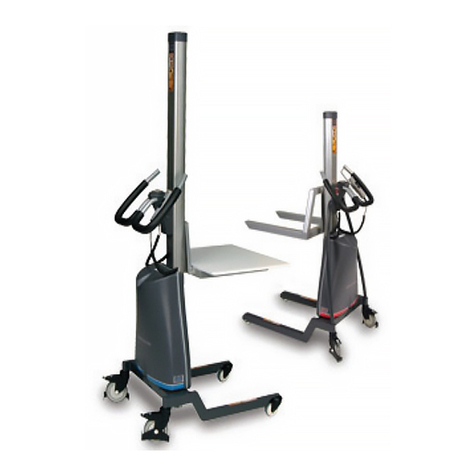
Presto Lifts
Presto Lifts PLS52-185 Setup guide
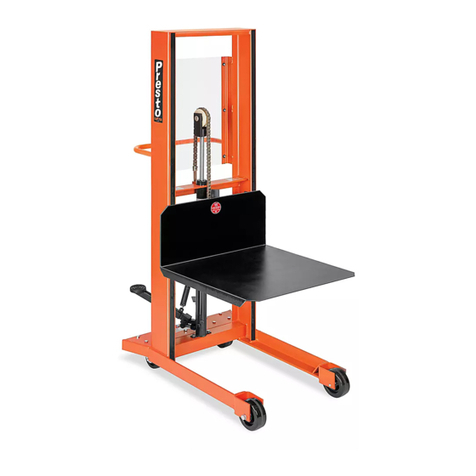
Presto Lifts
Presto Lifts H-1819 Setup guide
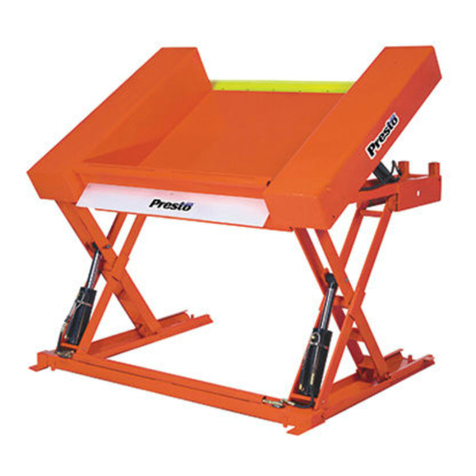
Presto Lifts
Presto Lifts XZ Series Setup guide
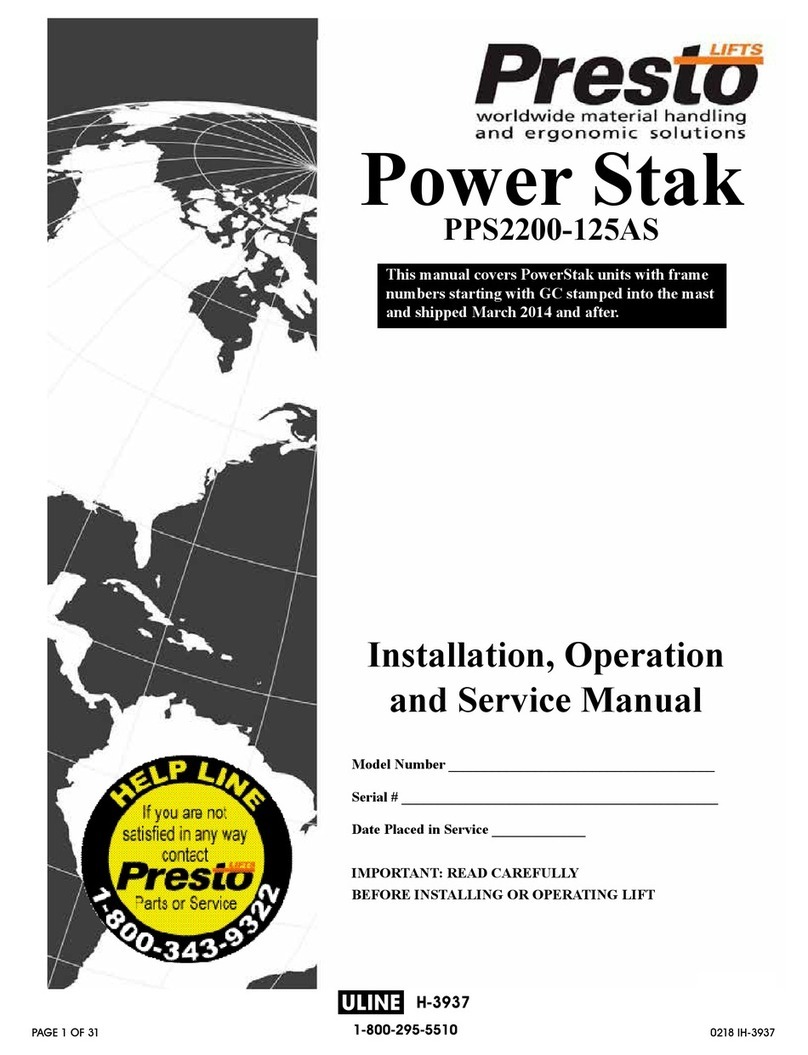
Presto Lifts
Presto Lifts PowerStack PPS2200-125AS Setup guide
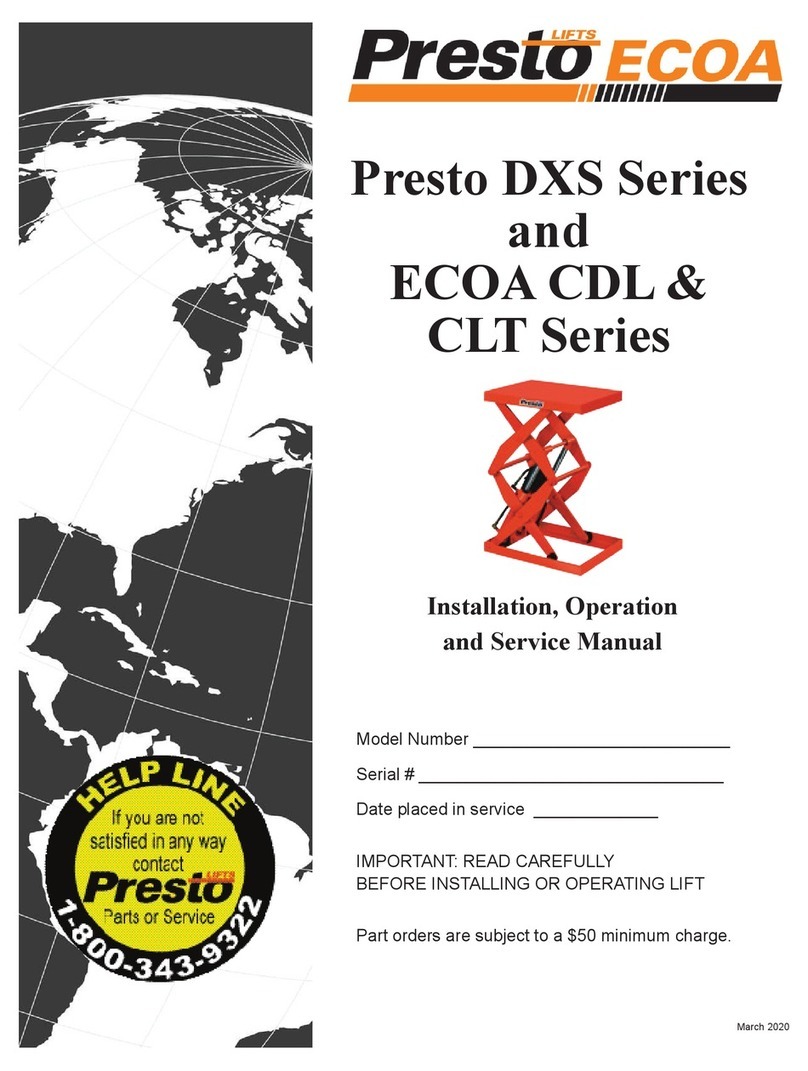
Presto Lifts
Presto Lifts ECOA DXS Series Setup guide

Presto Lifts
Presto Lifts LIFT-STIK User manual

Presto Lifts
Presto Lifts Dock Lift Series User manual
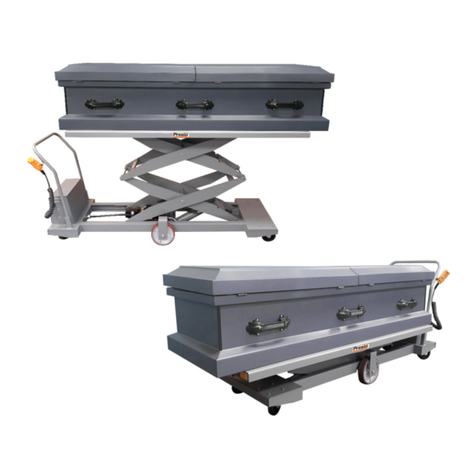
Presto Lifts
Presto Lifts XBP68-05 User manual

Presto Lifts
Presto Lifts PLS53-150P Setup guide
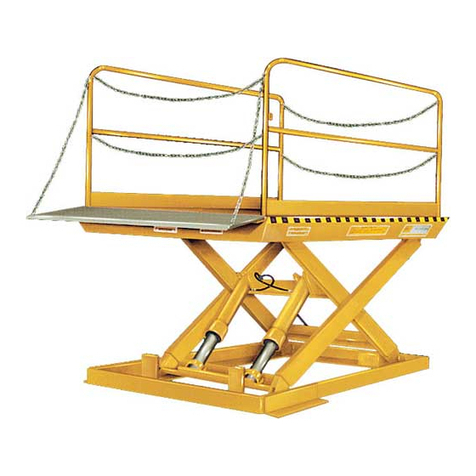
Presto Lifts
Presto Lifts SizzrDok HLD Setup guide


